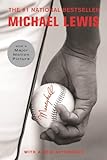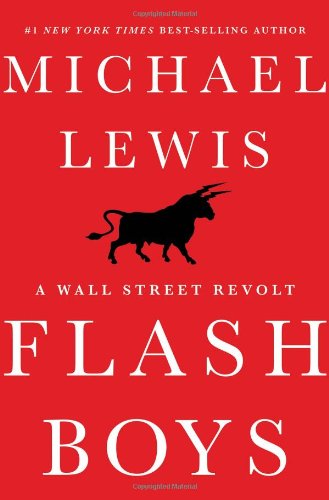In the early years of the digital age, it was common to hear dire warnings about “the death of narrative.” Storytelling, the thinking ran, is an artifact of a world where every bit of information requires its own patch of physical space – on a page, on film, in someone’s memory – that must be located and read separately. This quickly becomes unmanageable, so for millennia authors have organized information into little cause-and-effect narratives that helped audiences make sense of complex sets of facts.
But as early technologists pointed out, with the web browser making vast swathes of information instantly accessible, narrative becomes less crucial. Readers can find what they need by following links, bouncing from, say, a Wikipedia profile of George Clooney to TMZ posts on his sexy new girlfriend Amal Alamuddin to YouTube clips of him looking young and foxy on old episodes of ER. Twenty years ago, such a search would have required sifting through piles of clippings and old video tapes – or, more likely, reading a biography of George Clooney in which an author did the sifting for you and organized it in the form of a story.
Digital connectivity enables us to find and manage huge amounts of information, and we now spend our lives immersed in it, on Wikipedia and social networking sites and on our work computers that crunch the data we need to do our jobs. But as bestselling author Michael Lewis recently demonstrated with his new book, Flash Boys: A Wall Street Revolt, narrative still trumps hyperlinking when it comes to hugely complex sets of information – especially when powerful inside interests are working to make sure we can’t understand what that information means.

 Flash Boys, after all, breaks little new ground journalistically. The high-frequency trading (HFT) strategies the book describes have been part of the Wall Street landscape for a decade and HFT firms have been siphoning tens of billions of dollars from the exchanges that we all depend on to grow our retirement accounts for nearly as long. Major newspapers like the New York Times and Wall Street Journal have been on the story from the start, and Lewis himself name-checks two earlier books on the subject, Scott Patterson’s Dark Pools and Broken Markets by Sal Arnuk and Joseph Saluzzi.
Flash Boys, after all, breaks little new ground journalistically. The high-frequency trading (HFT) strategies the book describes have been part of the Wall Street landscape for a decade and HFT firms have been siphoning tens of billions of dollars from the exchanges that we all depend on to grow our retirement accounts for nearly as long. Major newspapers like the New York Times and Wall Street Journal have been on the story from the start, and Lewis himself name-checks two earlier books on the subject, Scott Patterson’s Dark Pools and Broken Markets by Sal Arnuk and Joseph Saluzzi.
We had the information, but very few of us could make sense of what we were seeing. The facts were just too abstruse to take in. HFT firms use super-fast computer connections and complex mathematical algorithms to predict the intentions of Wall Street players and trade ahead of them, snapping up stocks before the slower players can get to them and then selling them back to the slow-movers at inflated prices. This doesn’t sound good even to the uninitiated, but it also sounds technical and complicated, and, well, kind of boring. Before we know it, we’re back looking at those pics of George Clooney and his hot new lawyer girlfriend on TMZ.

 This is why we need a storyteller like Lewis, the author of twelve books, including bestsellers Moneyball and The Blind Side, to help us see what HFT firms are doing and why we should care. Essentially, Lewis says, HFT firms offer to buy or sell small numbers – typically 100 shares – of huge numbers of publicly traded stocks. When a big bank or mutual fund expresses interest in a stock, the trade on those first 100 shares triggers a lightning-fast reaction in which the HFT firm buys up the stock elsewhere in the system before the bigger, slower trader can, and pockets the difference between the price the big trader was willing to pay and the actual price of the stock on the open market.
This is why we need a storyteller like Lewis, the author of twelve books, including bestsellers Moneyball and The Blind Side, to help us see what HFT firms are doing and why we should care. Essentially, Lewis says, HFT firms offer to buy or sell small numbers – typically 100 shares – of huge numbers of publicly traded stocks. When a big bank or mutual fund expresses interest in a stock, the trade on those first 100 shares triggers a lightning-fast reaction in which the HFT firm buys up the stock elsewhere in the system before the bigger, slower trader can, and pockets the difference between the price the big trader was willing to pay and the actual price of the stock on the open market.
High-frequency traders can do this because their systems for connecting their computers to the stock exchanges – there are 45 of them now in the U.S. – are faster than the less specialized programs used by big banks and mutual funds. How much faster? Sometimes it’s just a few thousands of a second, but that’s enough time to enable HFT firms to skim tens of billions of dollars, penny by penny, out of the market. “It was like a broken slot machine in a casino that pays off every time,” Lewis writes of the system. “It would keep paying off until someone said something about it; but no one who played the slot machine had any interest in pointing out that it was broken.”
Part of the problem, Lewis writes, is that the American financial system has ceased to be imaginable on a human scale. Most people, he notes, when they imagine the stock market still see “a ticker tape run[ning] across the bottom of some cable TV screen, and alpha males in color-coded jackets stand[ing] in trading pits, hollering at each other. That picture is dated; the world it depicts is dead. …The U.S. stock market now trades inside black boxes, in heavily guarded buildings in New Jersey and Chicago.”

 The task Lewis sets for himself in Flash Boys is to pry the American financial system loose from those black boxes and reimagine it for us on a human scale. And to do that, he tells a story. If you have read Lewis’s earlier books, the plot of this one will sound familiar: a ragtag bunch of colorful geeks and misfits, armed only with their superior intelligence and moral rectitude, take on a corrupt system – and win! That this is essentially the plot of Lewis’ last bestseller, The Big Short, about the mortgage crisis, and eerily reminiscent of the plots of Moneyball, about the use of statistical analysis in baseball, and The New New Thing, about the early days of Silicon Valley, is frankly something of a worry. After reading a bunch of Lewis’s books, you begin to wonder just how many colorful geeks and misfits there really are out there, and how willing you are to believe a set of complex facts just because you want the good guys to win.
The task Lewis sets for himself in Flash Boys is to pry the American financial system loose from those black boxes and reimagine it for us on a human scale. And to do that, he tells a story. If you have read Lewis’s earlier books, the plot of this one will sound familiar: a ragtag bunch of colorful geeks and misfits, armed only with their superior intelligence and moral rectitude, take on a corrupt system – and win! That this is essentially the plot of Lewis’ last bestseller, The Big Short, about the mortgage crisis, and eerily reminiscent of the plots of Moneyball, about the use of statistical analysis in baseball, and The New New Thing, about the early days of Silicon Valley, is frankly something of a worry. After reading a bunch of Lewis’s books, you begin to wonder just how many colorful geeks and misfits there really are out there, and how willing you are to believe a set of complex facts just because you want the good guys to win.
This is the danger of narrative as a tool for spreading information. A tale well-told taps into the primal need we all have for an emotionally satisfying story of good triumphing over evil. If we like the central characters and want them to win, we stop thinking and start feeling. Lewis, a supremely gifted storyteller, understands this and deftly transforms an office full of well-educated bankers and software experts into the motley crew of quirky outsiders and warped idealists he needs to tell a satisfying story.
Lewis never speaks to the high-frequency traders that the book’s hero, Brad Katsuyama, a former Royal Bank of Canada equities trader, is battling against (most likely, they wouldn’t talk to him). So the central events of the book are seen through the eyes of Katsuyama and his merry band of insurgents, who range from computer geeks who keep oiled Rubik’s cubes under their desks to executives like John Schwall, whose moral prism is shaped by his working-class background as son and grandson of Staten Island firefighters. “It just really pissed me off,” Schwall says of the HFT trading strategies. “That people set out this way to make money from everyone else’s retirement account. I knew who was being screwed, people like my mom and pop, and I became hell-bent on figuring out who was doing the screwing.”
As will be the case in the movie that will surely be made of Flash Boys, upon discovering that shadowy outfits using algorithms written by Russian-born computer programmers are stealing from Wall Street, Katsuyama assembles a team and concocts a crazily ambitious plan to combat the thievery – namely, a new private exchange, called IEX, designed to eliminate the advantages of high-speed trading. “I feel like I’m an expert in something that badly needs to changed,” Katsuyama tells his wife, Ashley, one night. “I think there’s only a few people in the world who can do anything about this. If I don’t do something right now – me, Brad Katsuyama – there’s no one to call.”
Right. And the next morning, he puts on his blue suit and big red cape and flies to work.
There is too much of this kind of comic-book hero-making in Flash Boys, especially in its later sections, but does it invalidate the book? Here, I think, context is all. On March 30, before Flash Boys appeared, few outside Wall Street had heard of high-frequency trading, and even many people in finance had little idea how HFT really works. Now, thanks to Flash Boys, and a high-profile rollout that included an excerpt in the New York Times Magazine and a feature on 60 Minutes, federal investigations into high-frequency trading have picked up steam and trading volume on Katsuyama’s IEX is up 40% in just two weeks.
All systems for delivering information are imperfect because the human mind can only hold so much at one time, and when things get complicated, something important always gets left out. As it happens, this has been a running sub-theme of Lewis’s own reporting for his last several books: what happens when two different systems of collecting and analyzing information clash. At the heart of Moneyball, about the 2002 Oakland A’s, is a disconnect between an older, mostly narrative-based system of player evaluation favored by the team’s grizzled scouting team and a newer data-driven system favored by its stats geeks. The Big Short, about the mortgage crisis, is similarly about two different ways of reading the abundant data about the state of the mortgage market in the lead-up to the 2008 crash.
What’s interesting is that, unlike a lot of less sharp-eyed observers of commerce in the age of data, Lewis never makes the mistake of thinking that the one with the most data wins. The bankers who drove the economy off the cliff in 2008 had more than enough data to demonstrate that the bets they were making made no sense, but they told themselves a story that, while fanciful, allowed them to ignore evidence that would have gotten between them and their fat year-end bonuses. In the end, though, they were wrong. The market crashed, banks went bankrupt or were sold at fire-sale prices, and many bankers – though not nearly enough – lost their jobs.
Surely, high-frequency trading is more complicated than the Manichean portrait of it Lewis draws of it in Flash Boys, but if he hadn’t found a way to boil down this highly technical issue to an emotionally satisfying tale of good vs. evil, most of us would never have known it existed. Thanks in part to Lewis’ storytelling, a system hidden away in black boxes in heavily guarded buildings in New Jersey and Chicago has been dragged into the light. Now, comes the interesting part. Will Brad Katsuyama’s IEX solve the problem, or will the high-frequency traders lure their customers back despite the disclosures in Lewis’s book? The truth lies neither in data nor in stories, but in results. How all this plays out will tell the tale.









